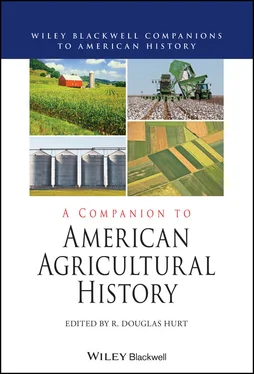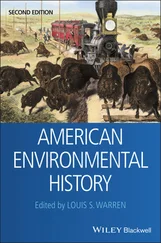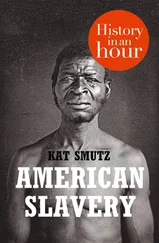Also like raisins, cotton depended on irrigation, particularly on the west (read dry) side of the valley. An abundance of water comes from the major rivers cascading down from the high Sierra (which boasts the nation’s deepest snowpack), most of them damned by the New Deal’s Central Valley Project, one of the most complex and massive water transfer systems ever built, which brought over a million acres of San Joaquin Valley land under irrigation with taxpayer-subsidized water. In addition to increasing usable acreage, irrigation allowed growers to water the crop in measured amounts at just the right time to avoid incidents of insufficient or excessive moisture. These conditions also greatly reduced weeds, which were controlled relatively easily with tractor-drawn cultivators rather than a year-round workforce as in the South. The controlled environment also reaffirmed growers’ decision, along with the crucial roles played by the state legislature and the US Department of Agriculture (USDA), to create and maintain a one-variety community throughout the entire San Joaquin Valley. The medium staple Acala cotton adapted to local environmental conditions, and its across-the-board adoption prevented contamination with inferior varieties and assured local gins of a uniform-quality raw material (Turner 1981; Musoke and Olmstead 1982; Kirby 1987; Olmstead and Rhode 2008).
Early on, cotton also shared the problems of an extremely labor-intensive crop, with Mexican nationals and Mexican Americans having replaced Asian workers in the 1920s. Prior to mechanization, most cotton in California was picked on a piece-rate basis by seasonal laborers under a contract system void of paternalism. Efforts to unionize workers led to frequent, widespread, and often violent disputes, most notably the San Joaquin cotton strike of 1933 involving many thousands of pickers for almost a month. Few ranchers intended to yield to worker unions, so they looked to mechanization as their solution, which they achieved en masse and at enormous cost savings over hand-picking by the late 1950s (Daniel 1982; Musoke and Olmstead 1982; Weber 1994).
Adding up the favorable environmental conditions, irrigation benefits, grower unity, generous governmental assistance, and mechanization, the production numbers alone speak volumes. In terms of acreage, California ranked fourteenth out of fifteen cotton-producing states in 1919, ninth by 1949, and second by 1959. With regard to bales produced, California moved from tenth place in 1929 to fifth place in the late 1940s, and was second only to Texas in 1959. From 1925 to 1959, California production increased 900 percent, while over the same period, total US production declined by 15 percent. In the new cotton kingdom of the San Joaquin Valley, growers achieved yields three times those of the traditional cotton-growing areas in the South, making California one of the top cotton-producing states in the nation (Musoke and Olmstead 1982).
One particular cotton rancher is the subject of a romping good read—Mark Arax and Rick Wartzman, The King of California: J.G. Boswell and the Making of a Secret American Empire (2003)—by far the best-selling book on any aspect of California agriculture over the last decade. As the title implies, journalists Arax and Wartzman seek to reveal the secrets of James Griffin (J.G.) Boswell (and, later, his son Jim), the biggest farmer in California, if not the United States and possibly the world. A slave-owning family from Greene County, Georgia, where Eli Whitney invented the cotton gin, the Boswells migrated to California in the 1920s. En route, as Jim liked to tell it, they passed up the lush Mississippi, Colorado, and Imperial valleys for “a god-forsaken salt lake in a place called Corcoran” in the lower San Joaquin Valley, 50 miles south of Fresno.
This was Tulare Lake, one of America’s biggest, but with no outlet to the sea on the dry west side of Kings County. Over time, and sparing no expense or hubris, J.G. drained it, planted field after field in Acala cotton, controlled flooding and irrigation by lobbying the federal government to build the controversial Pine Flat Dam on the Kings River, vertically integrated his firm, purchased more and more land, and battled the labor unions, “the reclamation boys in Sacramento and Washington,” and the “enviros” from seemingly everywhere. The end result was a “company” (they abhorred the word “plantation”) of 200,000 acres, give or take a few thousand, or, as the authors put it, “the equivalent of more than ten Manhattan Islands.” Along the way, Arax and Wartzman manage to weave in a cast of characters from Father Serra to Cecil B. DeMille to Charles Manson—a veritable Who’s Who of California history (Arax and Wartzman 2003).
As drama, The King of California is positively gripping. The narrative is tight, brilliantly conceived, fast-paced, and, simply put, nearly impossible to put down. The 430 pages of text go by in a flash. Every last rhetorical device seems to work, from sprinkling in a few of the King’s words here and there (no one had ever interviewed him before), to pointing out that growing a T-shirt takes 257 gallons of water, to quoting Winnie-the-Pooh on the issue of flooding. The real villain of the story, it turns out, was not so much Boswell himself but the government. Though not always in his back pocket, the federal government was always there when he needed it most—on the labor front, building dams, protecting his water rights from the 160-acre limit imposed by the Reclamation Act of 1902, and paying him millions upon millions of dollars in crop subsidies. The hero, in many ways, was the environment itself. Nature, for example, seemed to lure Boswell and other cotton farmers into a false sense of security, waiting for periods of 15–30 years before unleashing a “flood of the century” to refill the lake and drown the crops. And no matter how much Boswell spent on fertilizers and pesticides (upwards of $30 million a year), the cotton and bugs in the field found all sorts of ways to defy him. So effective are Arax and Wartzman that, by the end, it becomes almost impossible to criticize the book without appearing to be a mouthpiece or an apologist for the King (Arax and Wartzman 2003).
But criticize we must. Grower-state relations, as portrayed in this book’s account of Boswell’s life, are highly oversimplified, if not sensationalized. Arax and Wartzman take their cue from Donald Worster, Rivers of Empire: Water, Aridity, and the Growth of the American West (1985), and Marc Reisner, Cadillac Desert: The American West and Its Disappearing Water (1986). The Kings River was a “river of empire,” they insist, and the scheme to dam it part of the larger “hydraulic society” of twentieth-century America. In this view, the federal government, and indeed all levels of government, acted as a monolithic bloc and, moreover, simply as an extension of the capitalist system. The workings of government and the political process, however, were often considerably more mundane. A number of histories, chief among them Donald J. Pisani, Water, Land, and Law in the West: The Limits of Public Policy , 1850–1920 (1996), and Pisani, Water and American Government: The Reclamation Bureau, National Water Policy, and the West , 1902–1935 (2002), have demonstrated persuasively that water policy itself was actually constrained by competition among Western states, interagency rivalries, constant conflict between Congress and executive agencies, and any number of other forces dating back well into the nineteenth century. Good history, the point being, does not always make good drama, and vice versa.
In the end, the King himself may have had the last laugh. Americans, historians and nonhistorians alike, love to see the world in dichotomies—rural/urban, agricultural/industrial, agrarian/capitalist, frontier/factory. No one understood this better, or took better advantage of it, than Boswell. He wore blue jeans and cowboy boots, drove a pick-up-truck, and described himself as “a boy from a Georgia cotton patch” while living in a mansion in San Marino and sitting on the boards of directors of Cal Tech and Safeway Stores. He could be whatever he wanted to be, whenever he wanted to be it—including the voice of agrarianism. Arax and Wartzman fall right into his trap. They rely on their readers’ desire to picture the farmer as continuing in the tradition and glory of Jeffersonian virtue in order to horrify with their crack investigative reporting. Bad growers. Bad government bureaucrats. The unintended result is to make Boswell a sympathetic figure and evoke admiration for his grit and persistence. Jeffersonian agrarianism lives on in California, albeit in mysterious ways (Arax and Wartzman 2003).
Читать дальше











